|
|

|
Day 4, Thursday 23 May
No improvement…….. Another day brings no improvement in my suffering. I still feel tensed up and drowsy and can’t figure out why. I write up my notes then head down for breakfast but with little appetite. I only fancy the cornflakes, yogurt and toast, nothing cooked. Back in the room. I really don’t feel like going out but they will need to clean the room and as it’s the last full day here, there are still some sites we should visit before we head back to Bangkok. At 11.00am I have to bite the bullet and head downtown.
Botahtaung Pagoda…….. The Botahtaung Pagoda lies on the bank of the Yangon river. It’s situated in a large compound with an arrangement of buildings unlike those I’m used to in Thailand. Gone is the ornate viharn and ubosot replaced with halls that lack imagination in design but function in exactly the same way as Buddhist temples in Thailand. The Buddha images are in their distinctive style with the addition of deities whose function and existence is a mystery to me but not to many worshippers including dear Katoon.
The Botataung Pagoda itself also spelled Botahtaung; literally "1000 military officers") is he prominant feature. The pagoda was first built by the Mon around the same time as was Shwedagon Pagoda—according to local belief, over 2500 years ago, and was known as Kyaik-de-att in Mon language. The pagoda is hollow within, and houses what is believed to be a sacred hair of Gautama Buddha. The Botahtaung Pagoda was completely destroyed during World War II, and was rebuilt after the war.
Unusually you can walk into the vault beneath the pagoda which has a cramped passageway leading to the golden ‘Buddha’ and various items of jewelry and regalia. The walls of the passageway are all lined with gilded panels in relief as are the ceilings; these panels placed in an odd mixture of planes. This vault and its precious contents were discovered during reconstruction after independance.
In the principal hall, the Royal Glass Palace, is the Buddha's Bronze Image which has a facinating history: In 1859 by the Royal Order of King Mindon of Burma, the gilded bronze image of the Buddha was cast in the Mandalay Palace. The gilded image was made up of gold, silver, bronze, iron and lead in different proportions. Inside the Buddha image, King Mindon enshrined Buddha relics and consecrated and kept the image in the Royal Palace for the Royal Family to pay homage. This image of the Buddha became known as the Royal Palace Bronze Image.
In 1885 the British annexed upper Burma and took over the Royal Palace. King Thibaw and Queen Supayalat went into exile in India. The Royal Palace Bronze Image was taken by the British Army and shipped to Britain.
On the 4th January 1948, Burma regained its independence and the Burmese government requested the British government to return all the royal possessions taken from the Mandalay Royal Palace. The Royal Palace Bronze image had been displayed at the Victoria and Albert museum for 66 years but was returned from Britain and finally reached Burma on the 17th June 1951. After residing in a temporary shrine, the Royal Palace Bronze Image was transferred to to a newly built glass panelled shrine here at the Botahtaung Pagoda.
Other important buildings on this site are, the Mahar Bawdi Pahtanhti Pagoda, Botahtaung Phoe Phoe Gyi and the Buddha Bronze Image Of Wisdom And Mindfulness. Also visted is Her Holiness Mya Nang Nwe shrine.
No improvement…….. Another day brings no improvement in my suffering. I still feel tensed up and drowsy and can’t figure out why. I write up my notes then head down for breakfast but with little appetite. I only fancy the cornflakes, yogurt and toast, nothing cooked. Back in the room. I really don’t feel like going out but they will need to clean the room and as it’s the last full day here, there are still some sites we should visit before we head back to Bangkok. At 11.00am I have to bite the bullet and head downtown.
Botahtaung Pagoda…….. The Botahtaung Pagoda lies on the bank of the Yangon river. It’s situated in a large compound with an arrangement of buildings unlike those I’m used to in Thailand. Gone is the ornate viharn and ubosot replaced with halls that lack imagination in design but function in exactly the same way as Buddhist temples in Thailand. The Buddha images are in their distinctive style with the addition of deities whose function and existence is a mystery to me but not to many worshippers including dear Katoon.
The Botataung Pagoda itself also spelled Botahtaung; literally "1000 military officers") is he prominant feature. The pagoda was first built by the Mon around the same time as was Shwedagon Pagoda—according to local belief, over 2500 years ago, and was known as Kyaik-de-att in Mon language. The pagoda is hollow within, and houses what is believed to be a sacred hair of Gautama Buddha. The Botahtaung Pagoda was completely destroyed during World War II, and was rebuilt after the war.
Unusually you can walk into the vault beneath the pagoda which has a cramped passageway leading to the golden ‘Buddha’ and various items of jewelry and regalia. The walls of the passageway are all lined with gilded panels in relief as are the ceilings; these panels placed in an odd mixture of planes. This vault and its precious contents were discovered during reconstruction after independance.
In the principal hall, the Royal Glass Palace, is the Buddha's Bronze Image which has a facinating history: In 1859 by the Royal Order of King Mindon of Burma, the gilded bronze image of the Buddha was cast in the Mandalay Palace. The gilded image was made up of gold, silver, bronze, iron and lead in different proportions. Inside the Buddha image, King Mindon enshrined Buddha relics and consecrated and kept the image in the Royal Palace for the Royal Family to pay homage. This image of the Buddha became known as the Royal Palace Bronze Image.
In 1885 the British annexed upper Burma and took over the Royal Palace. King Thibaw and Queen Supayalat went into exile in India. The Royal Palace Bronze Image was taken by the British Army and shipped to Britain.
On the 4th January 1948, Burma regained its independence and the Burmese government requested the British government to return all the royal possessions taken from the Mandalay Royal Palace. The Royal Palace Bronze image had been displayed at the Victoria and Albert museum for 66 years but was returned from Britain and finally reached Burma on the 17th June 1951. After residing in a temporary shrine, the Royal Palace Bronze Image was transferred to to a newly built glass panelled shrine here at the Botahtaung Pagoda.
Other important buildings on this site are, the Mahar Bawdi Pahtanhti Pagoda, Botahtaung Phoe Phoe Gyi and the Buddha Bronze Image Of Wisdom And Mindfulness. Also visted is Her Holiness Mya Nang Nwe shrine.
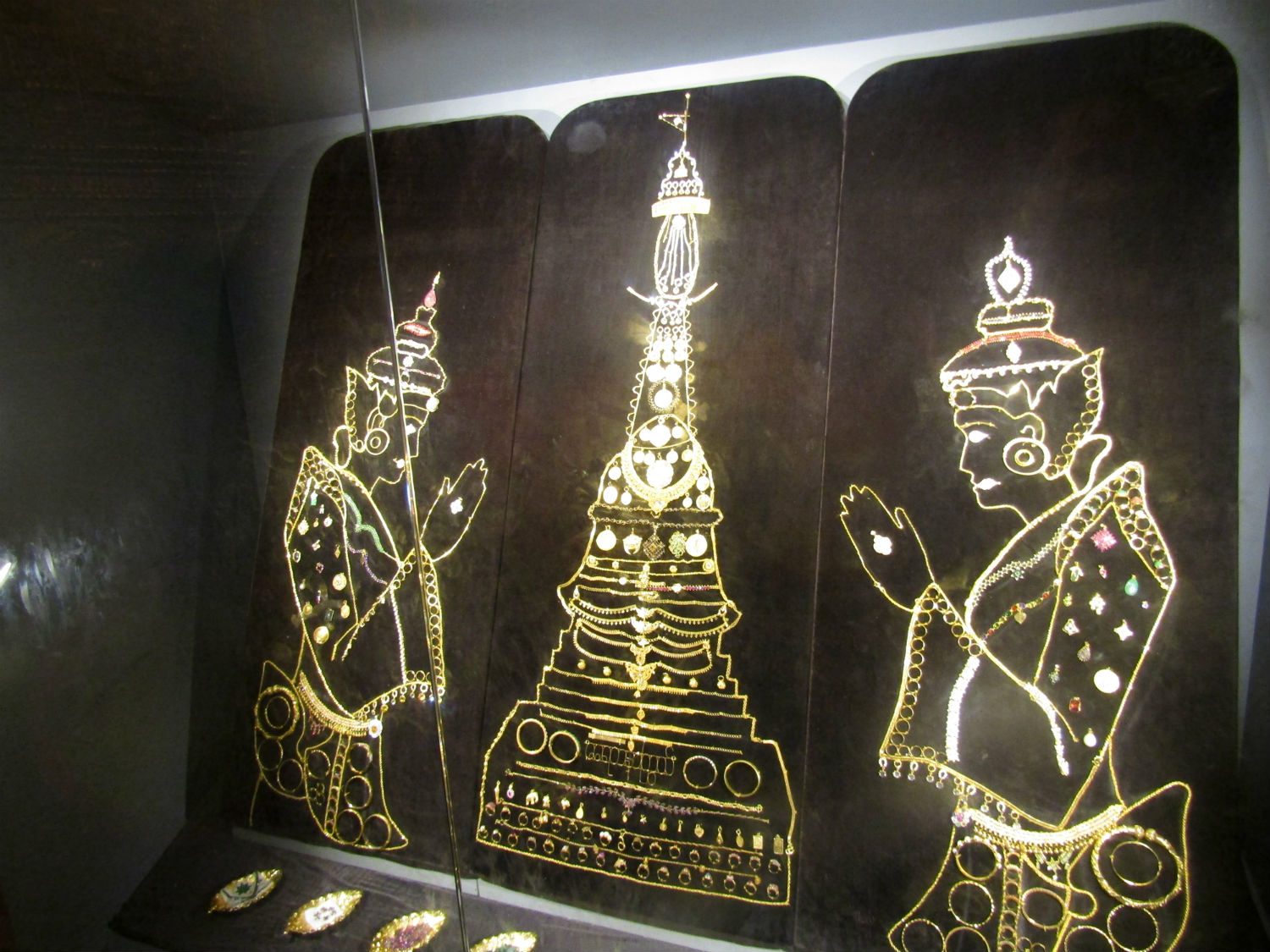
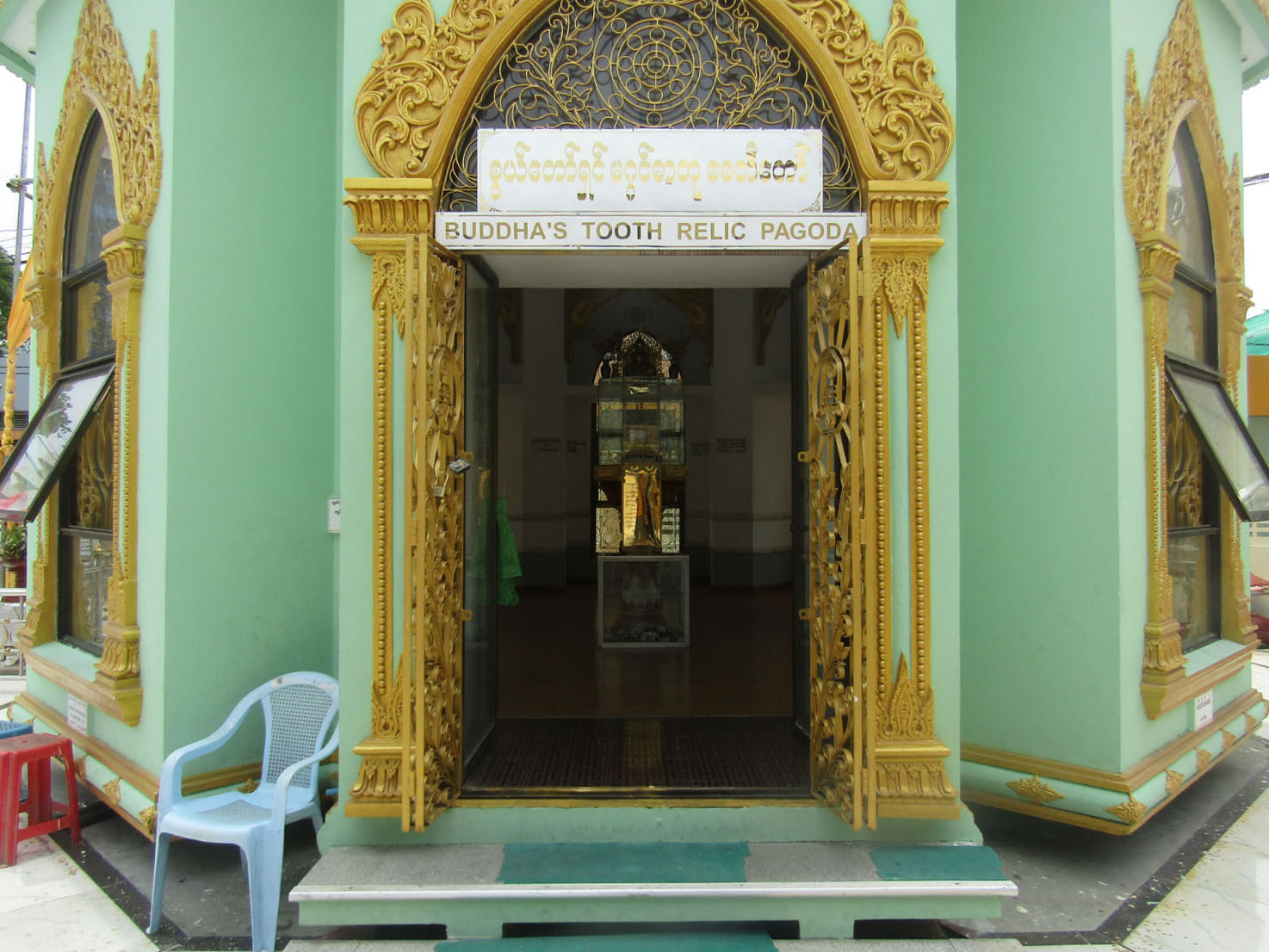
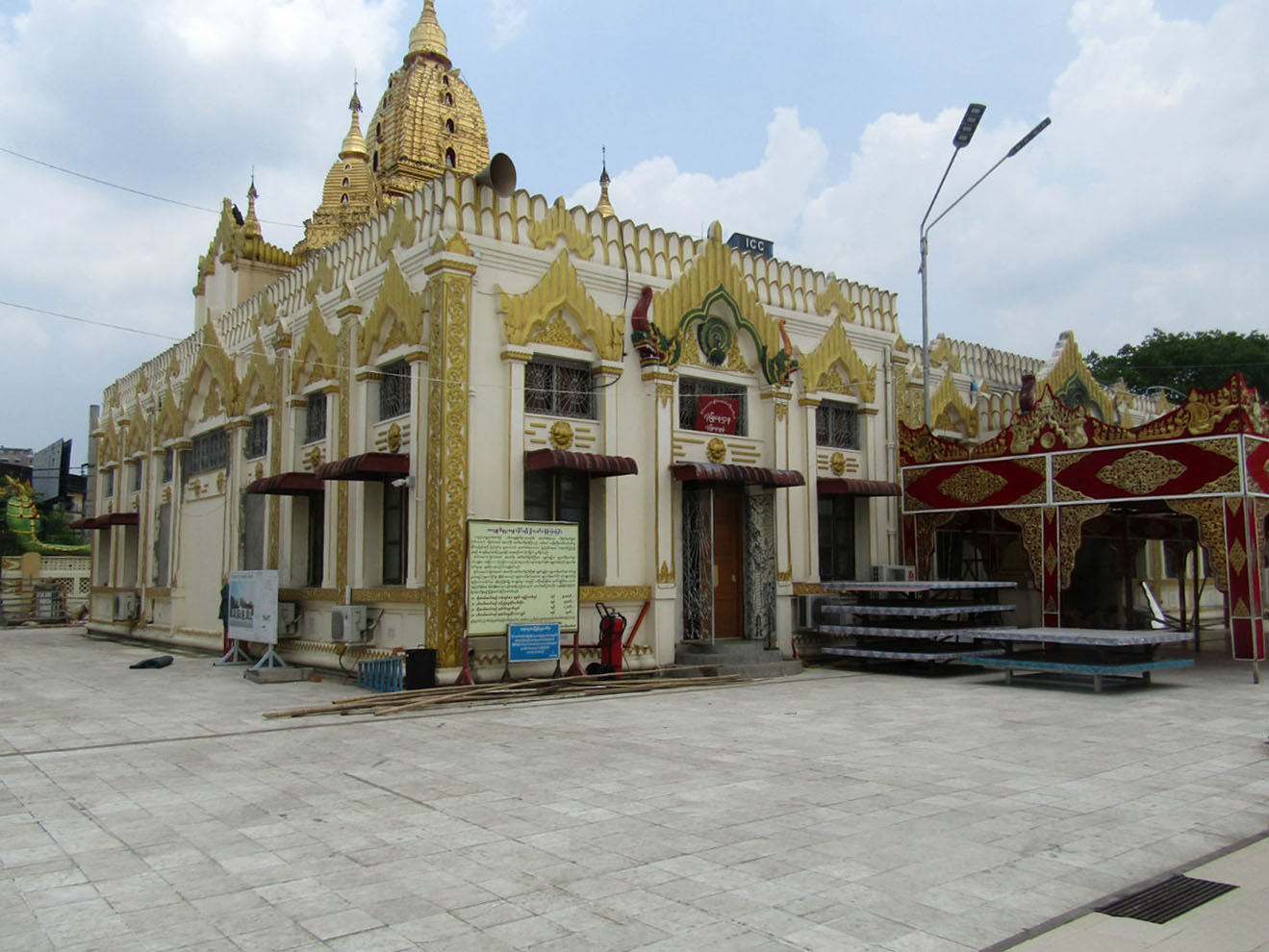
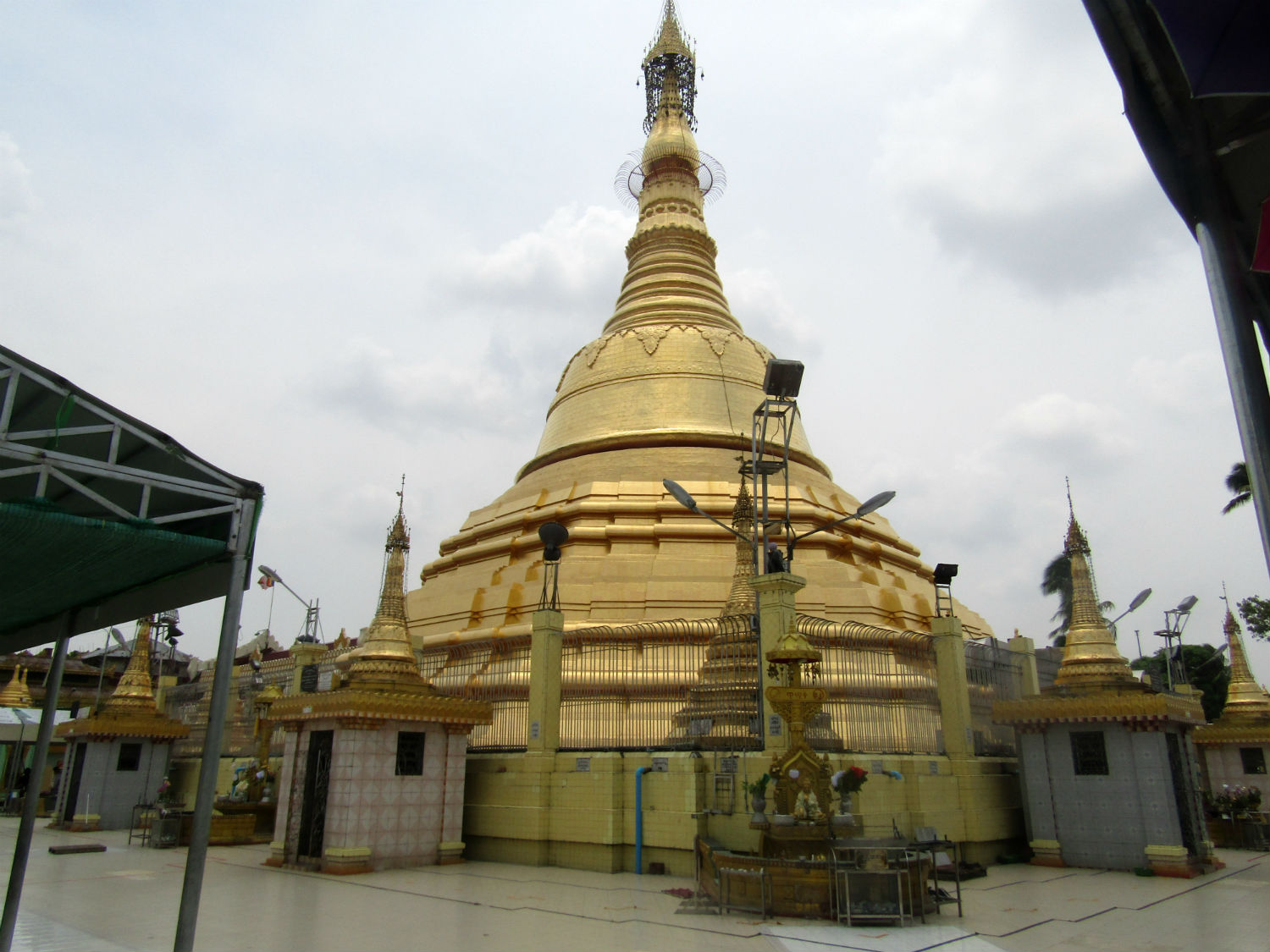
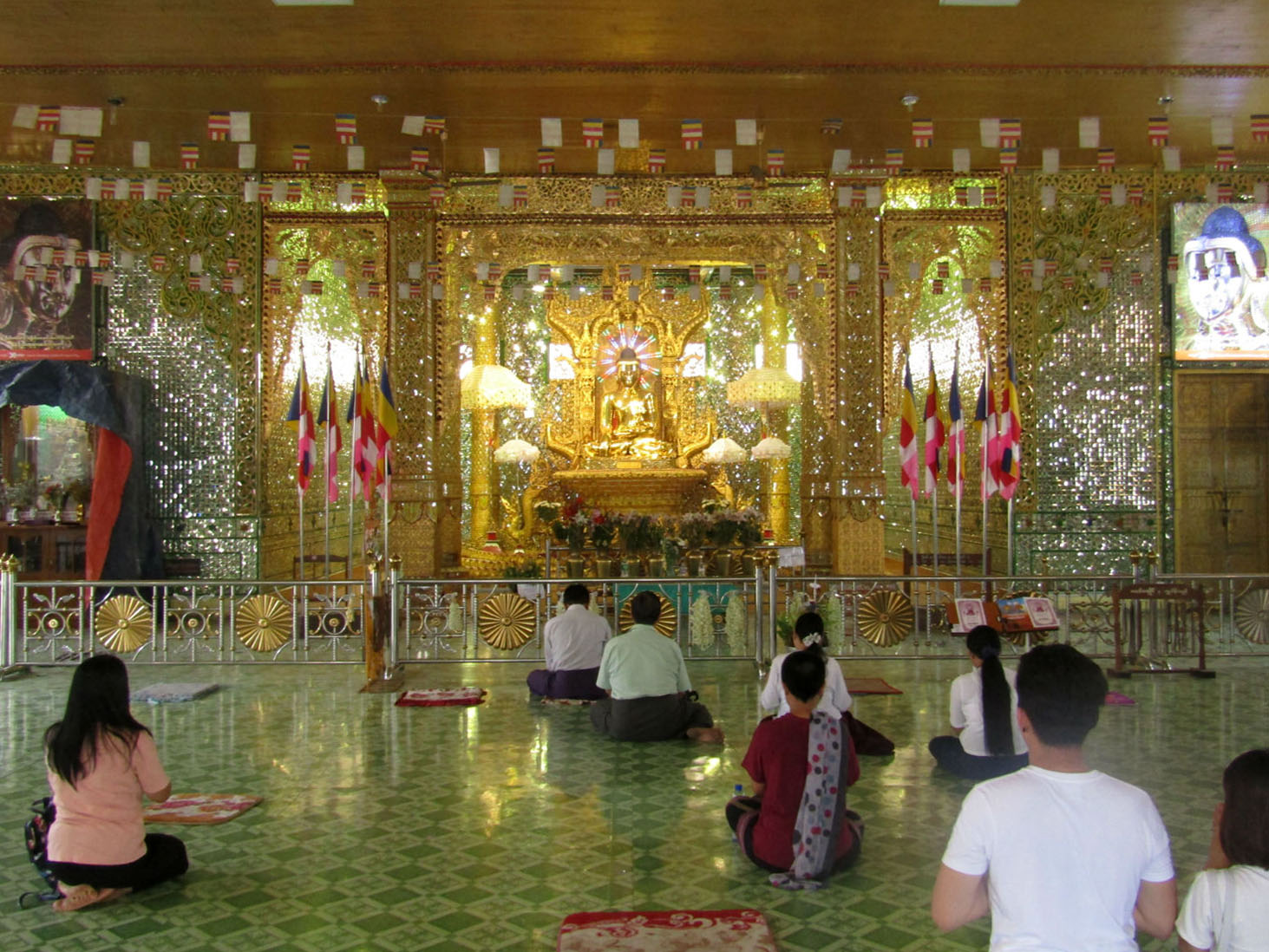
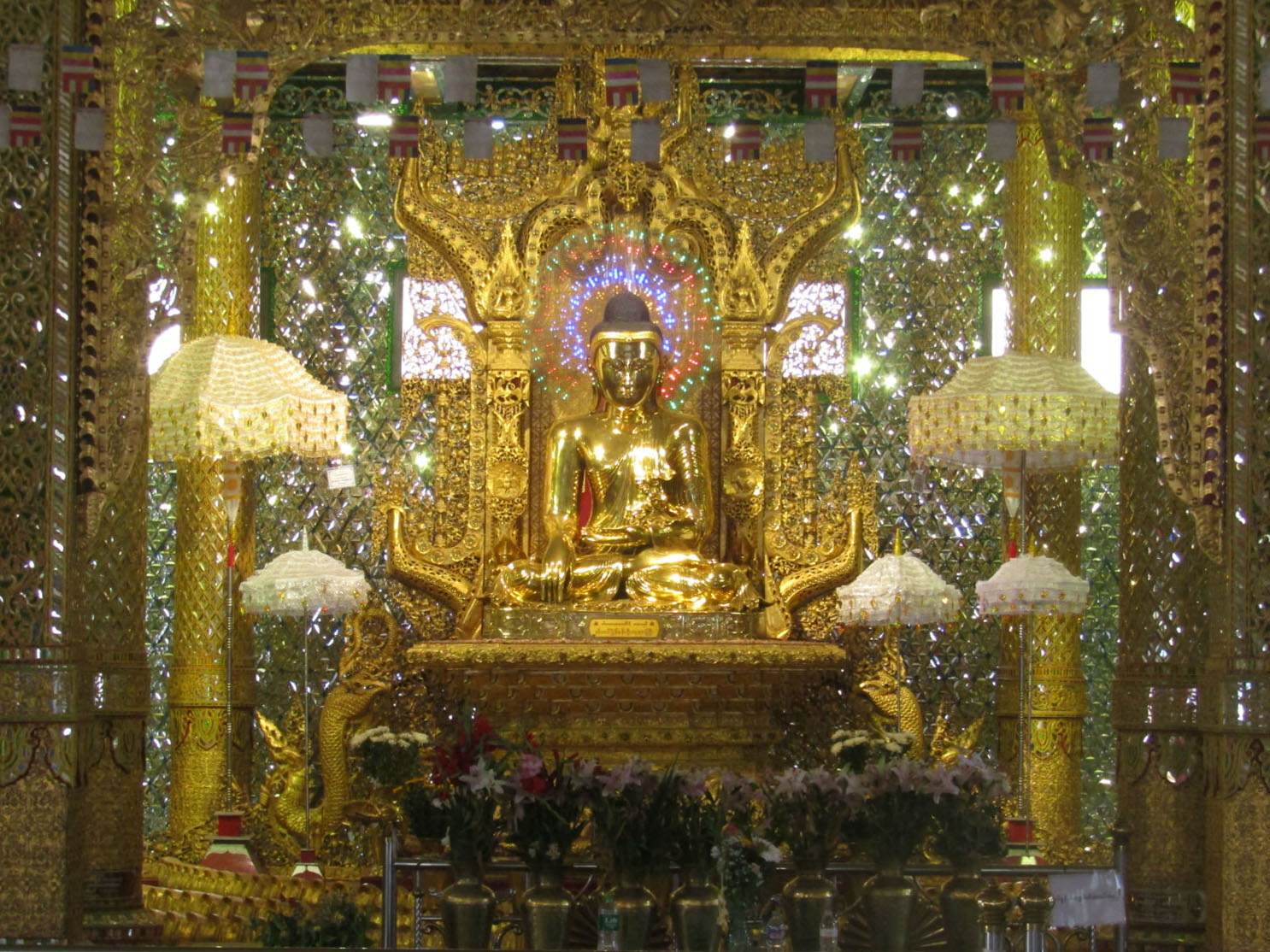
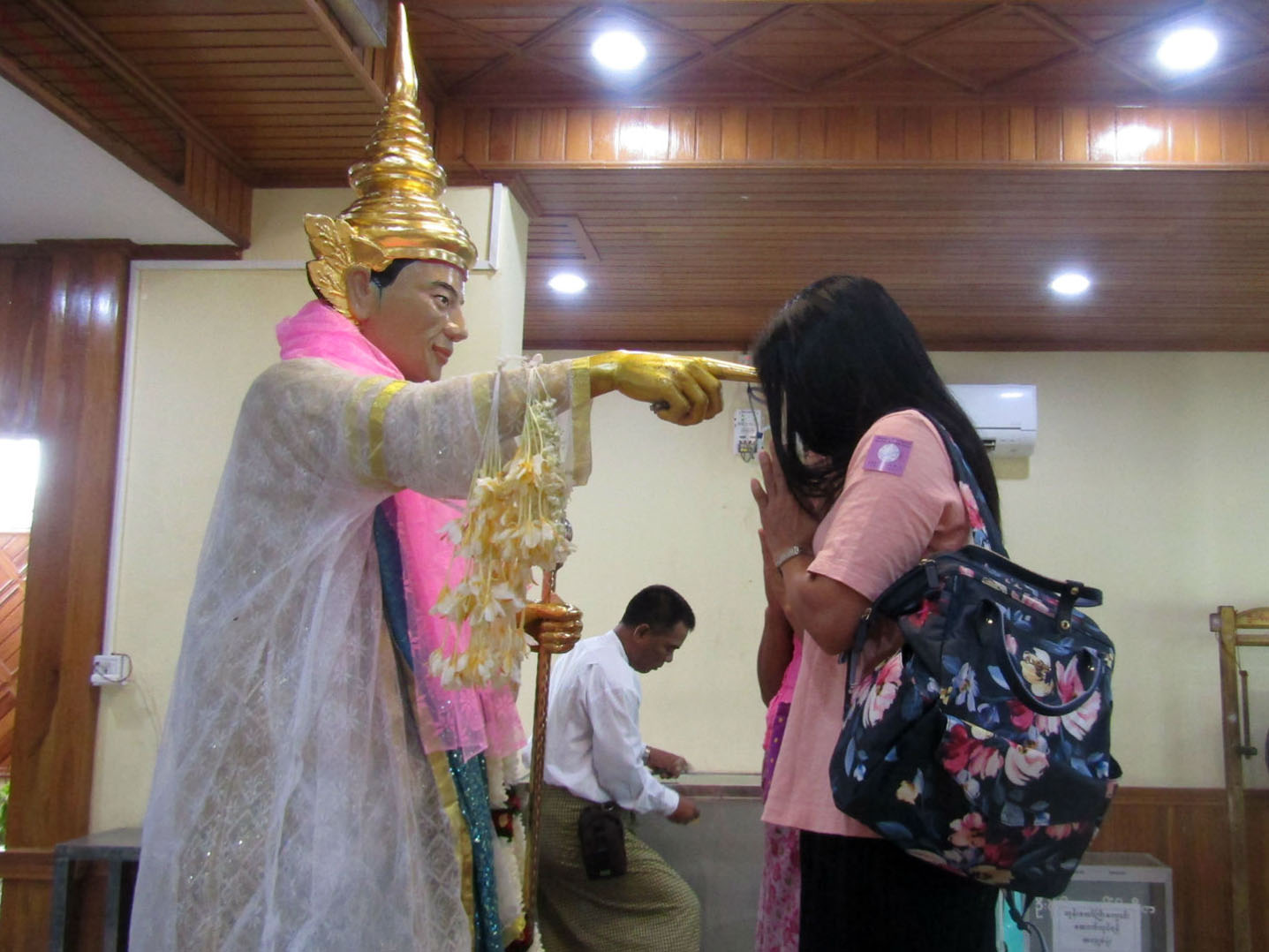
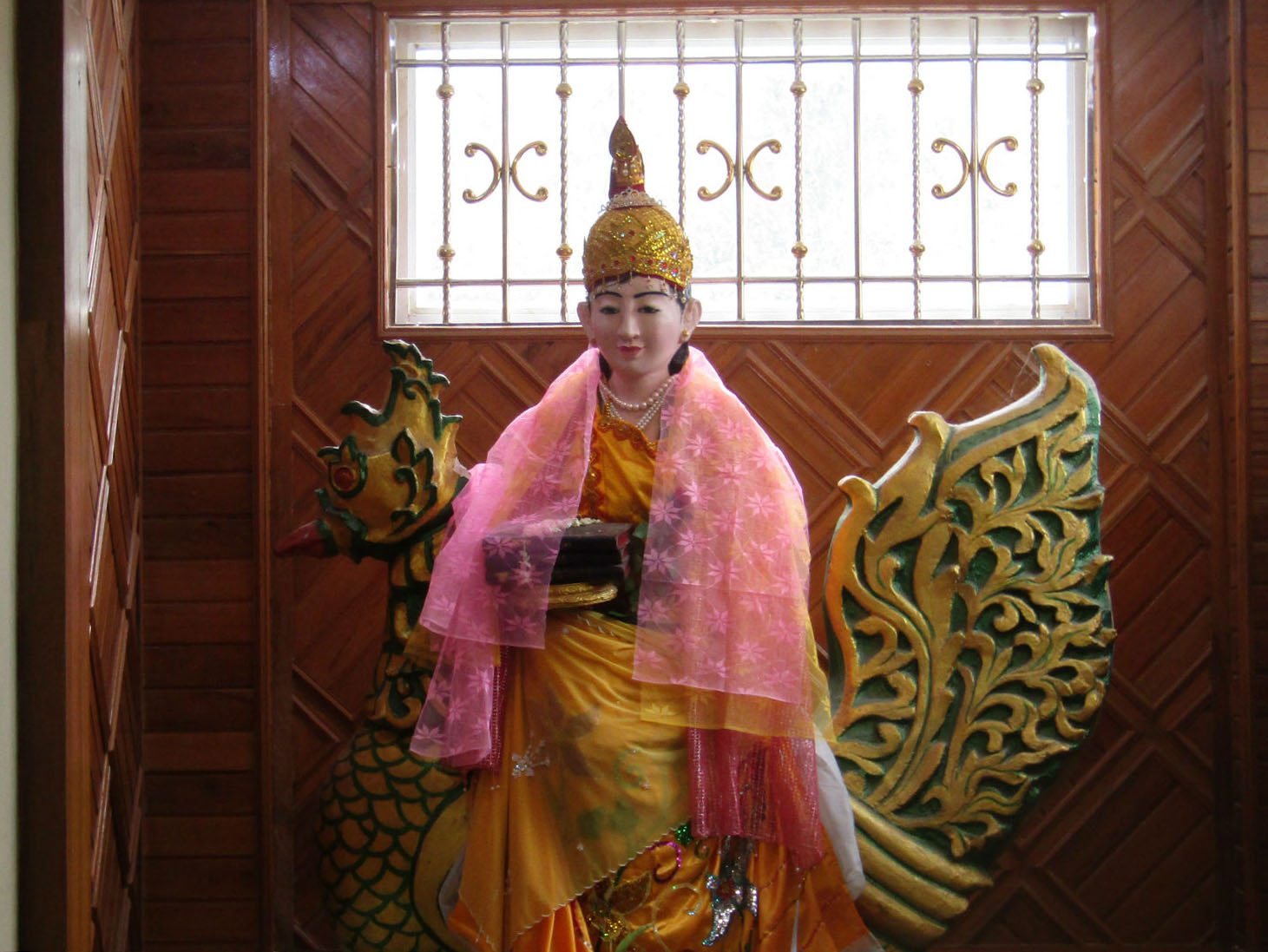

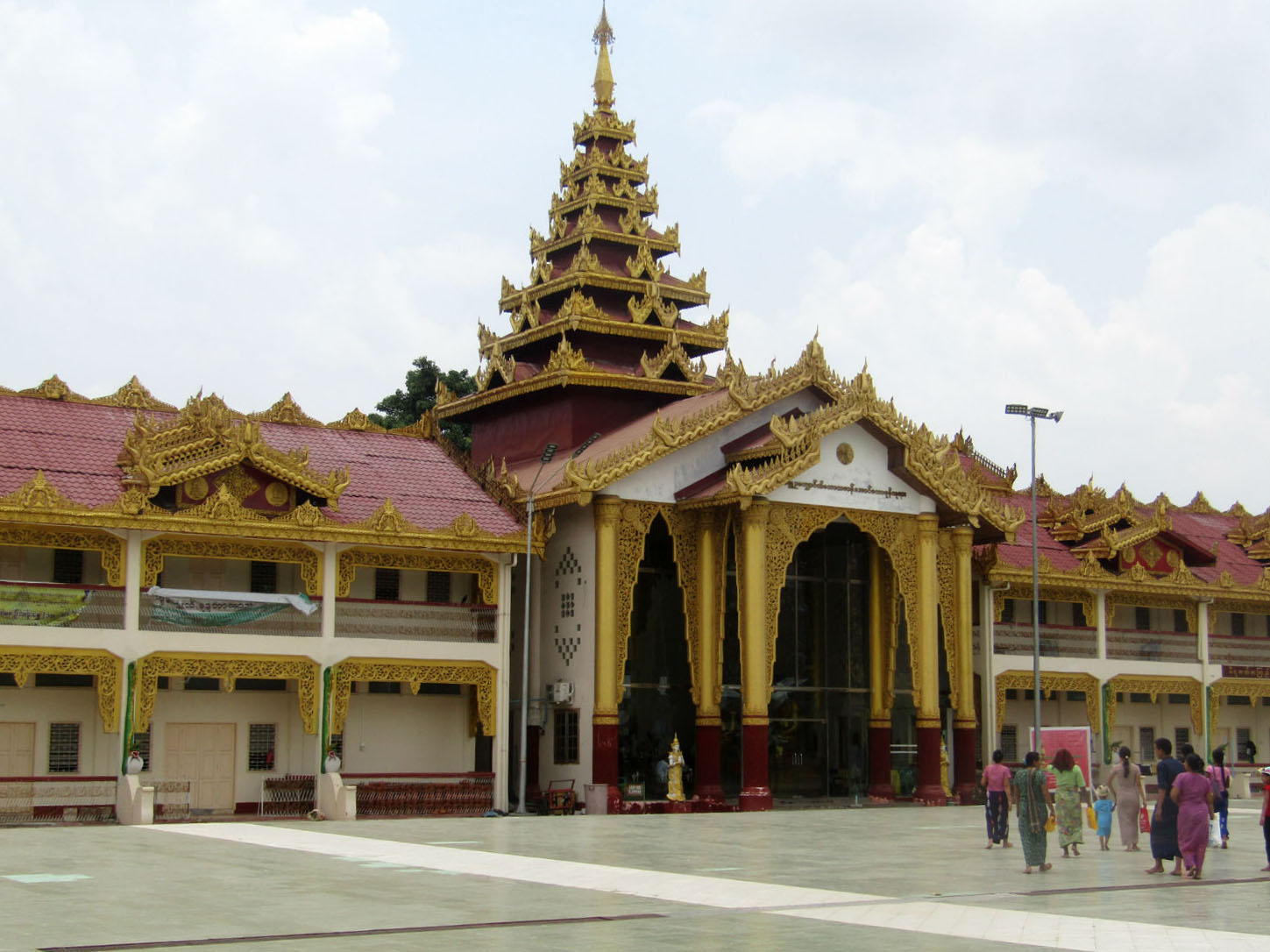
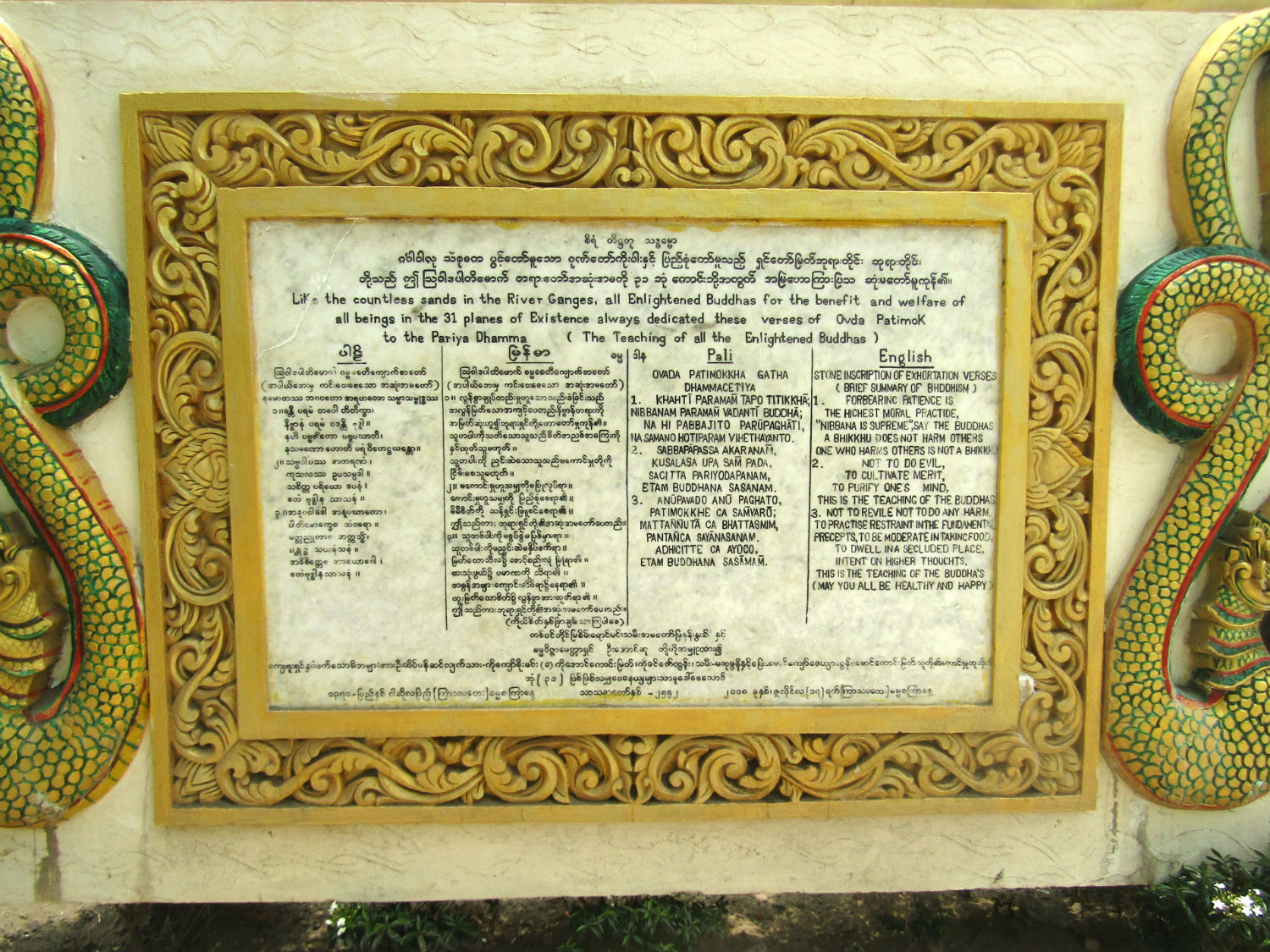
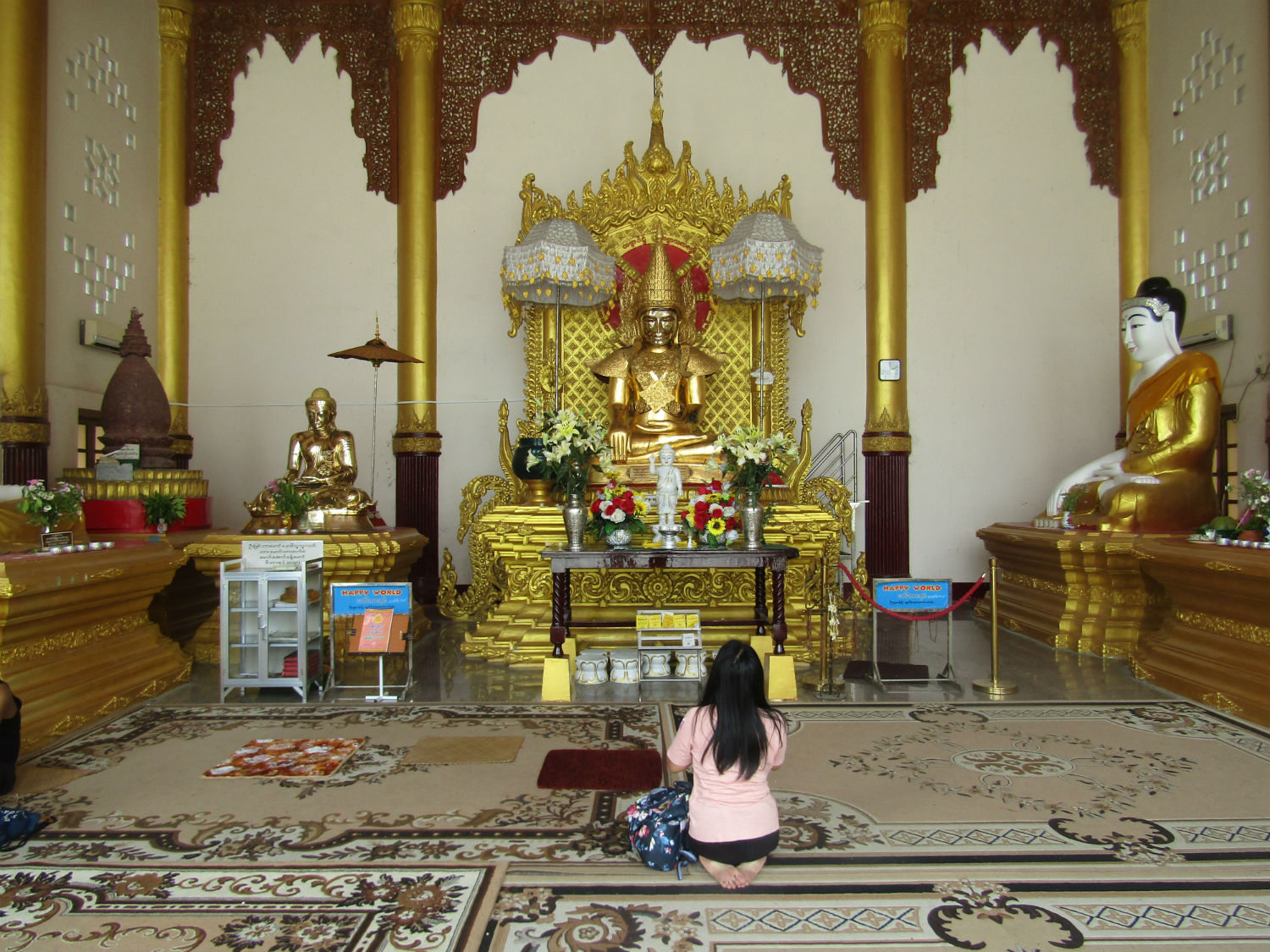
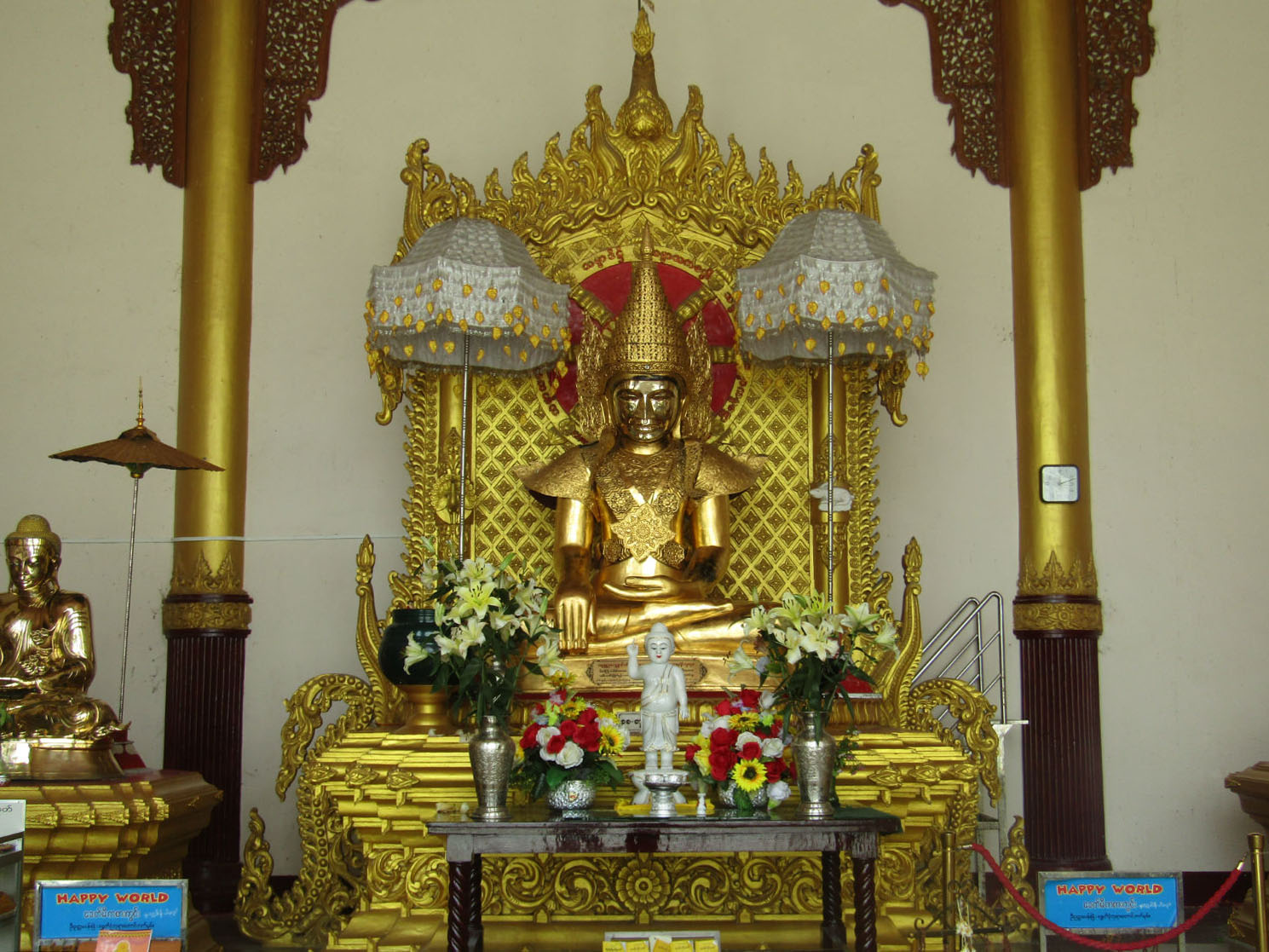
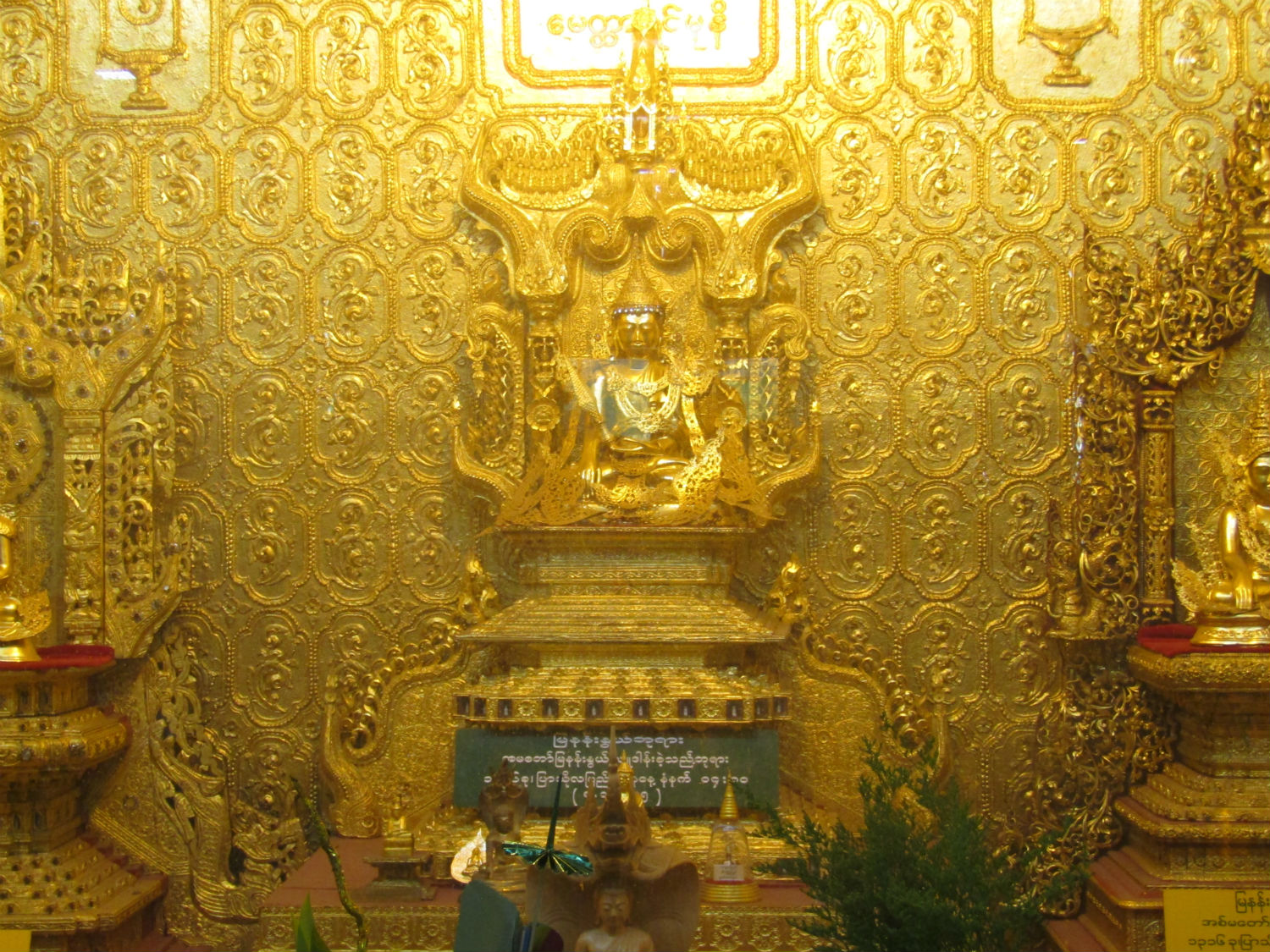
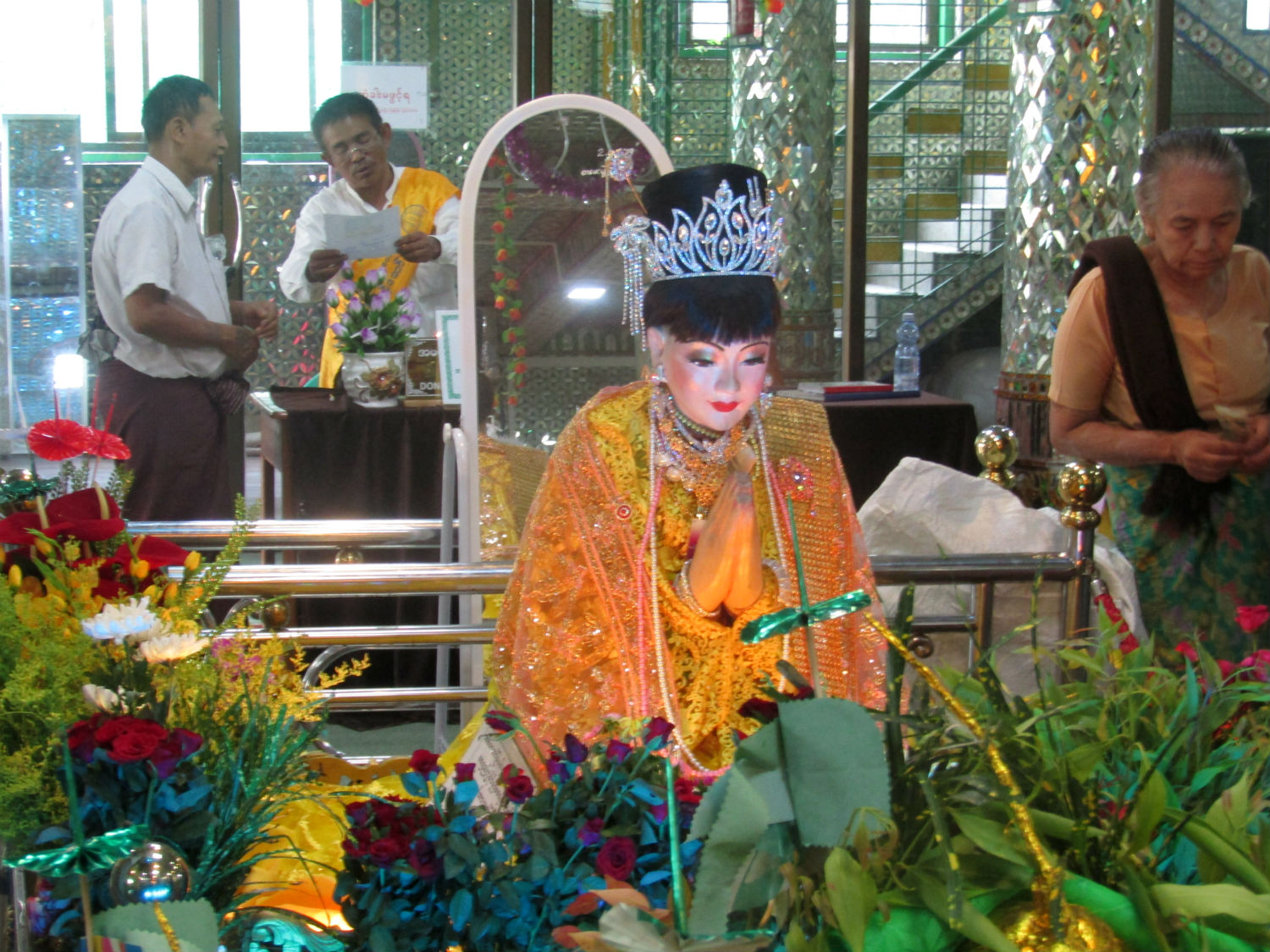 Botahtaung Pagoda, Botahtaung, Yangon
Botahtaung Pagoda, Botahtaung, Yangon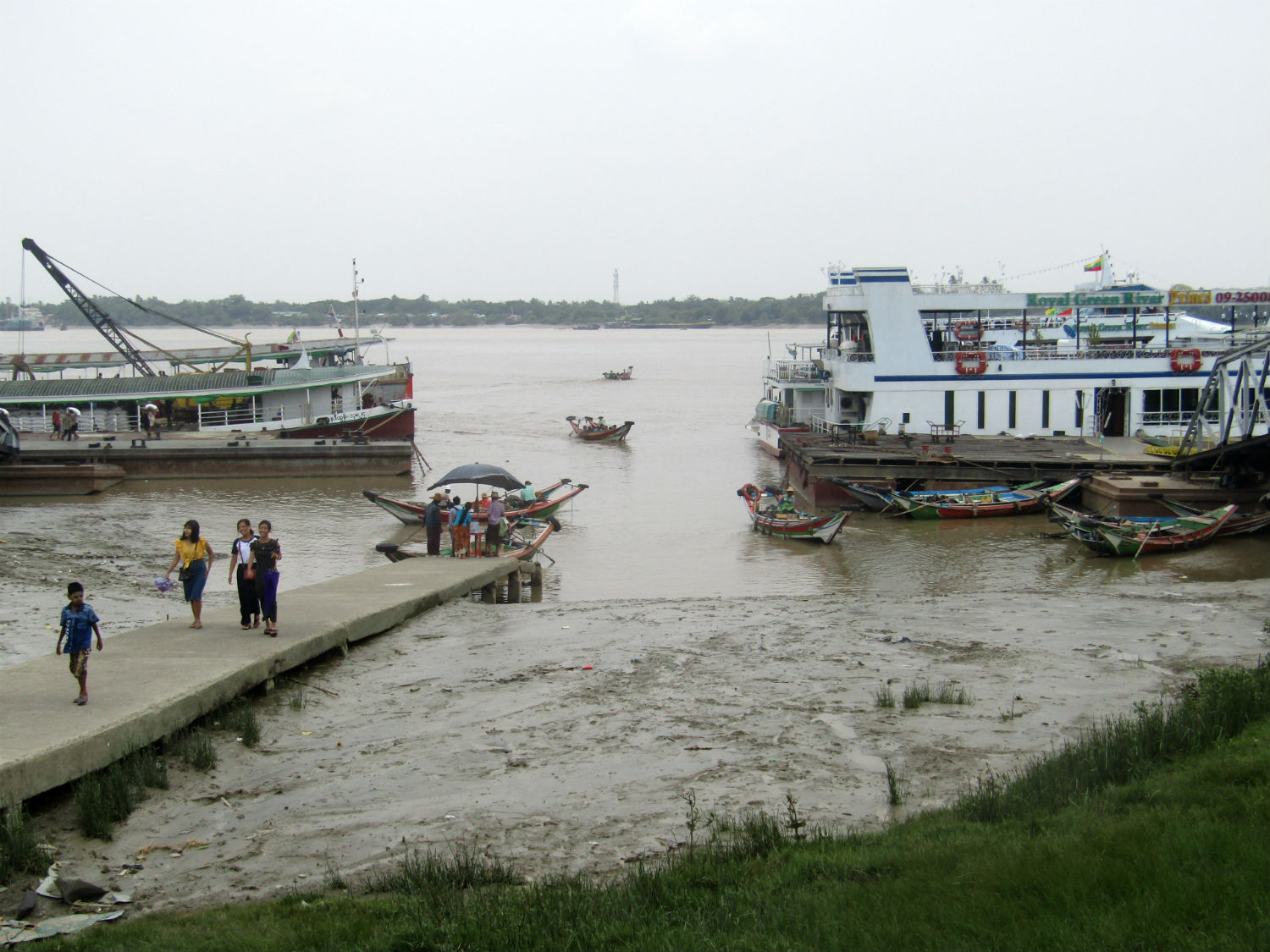

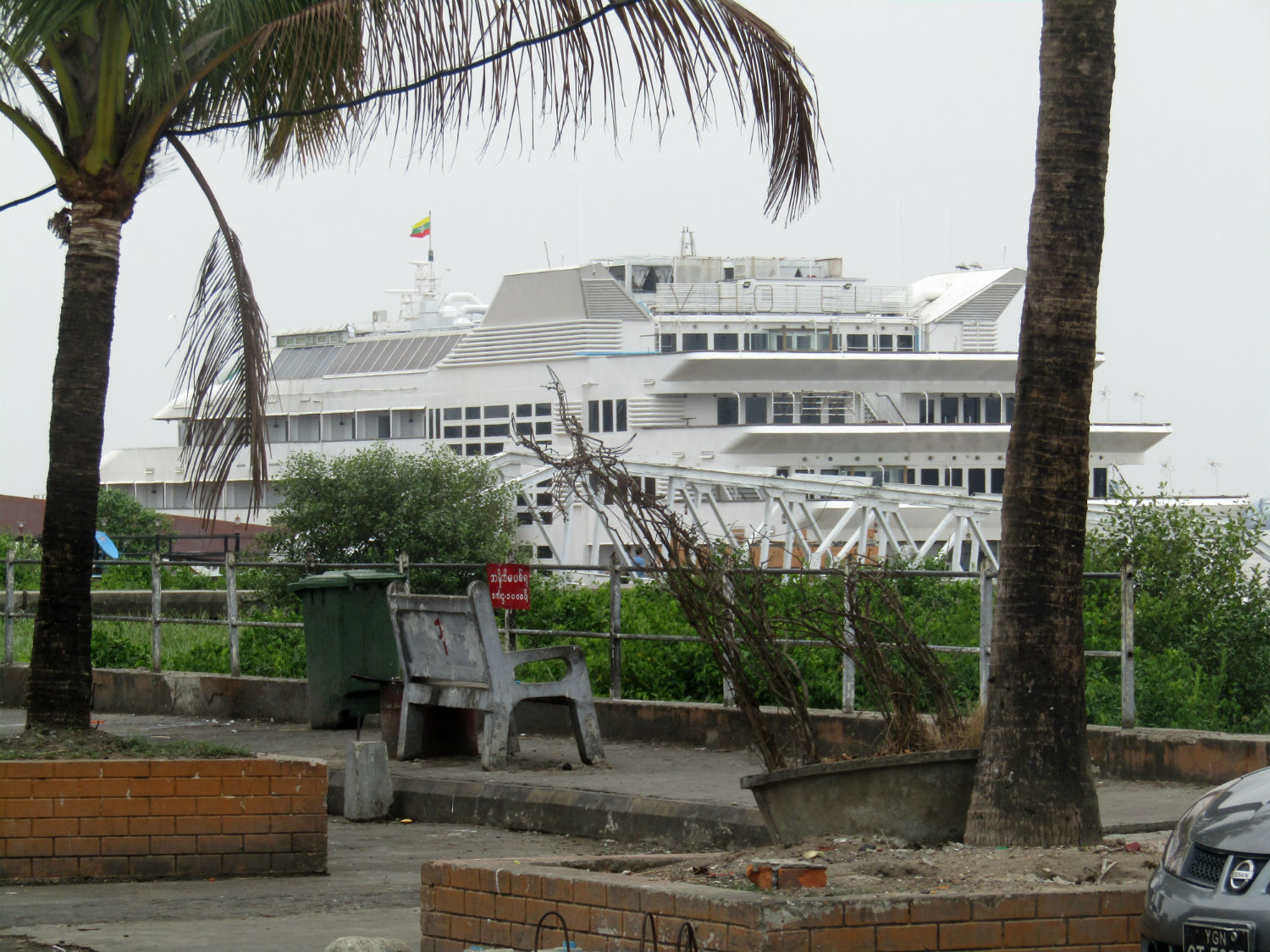 Botahtaung Jetty and the Vintage Luxury Yacht Hotel, Botahtaung, Yangon
Botahtaung Jetty and the Vintage Luxury Yacht Hotel, Botahtaung, Yangon
Botahtaung Jetty……..
Being so close to the Yangon river we wander to the Botahtaung Jetty but a picturesque scene it just is not. The banks are clogged with mud and silt, the water a dirty brown from all the sediment washed down. Used to seeing temples in spectacular location in Thailand, the Botahtaung Pagoda resides amongst container towers, cranes, railway sidings, warehouses and so forth in the typically squalid conditions of much of the rest of the city, bringing into perspective where the priorities lay here. By complete contrast however, the nearby Vintage Luxury Yacht Hotel is available to book online. I guess it is convenient!
Katoon lingers awhile: Quite what the fascination is here I don’t know but there’s one more location we should visit not that far away.
St Mary’s Catholic Church…….. They call it ‘sods law’ but having had ample opportunity to visit St Mary’s Catholic Church by now, we arrive precisely during midday closure between 12.00 and 2.00pm. It’s now around 1.00pm and we really can’t stand around in the heat and wait for it to reopen. We press on for a while but it’s no good; my body cannot take any more punishment and we have to retreat back to the hotel where I’m soon asleep.
Katoon lingers awhile: Quite what the fascination is here I don’t know but there’s one more location we should visit not that far away.
St Mary’s Catholic Church…….. They call it ‘sods law’ but having had ample opportunity to visit St Mary’s Catholic Church by now, we arrive precisely during midday closure between 12.00 and 2.00pm. It’s now around 1.00pm and we really can’t stand around in the heat and wait for it to reopen. We press on for a while but it’s no good; my body cannot take any more punishment and we have to retreat back to the hotel where I’m soon asleep.
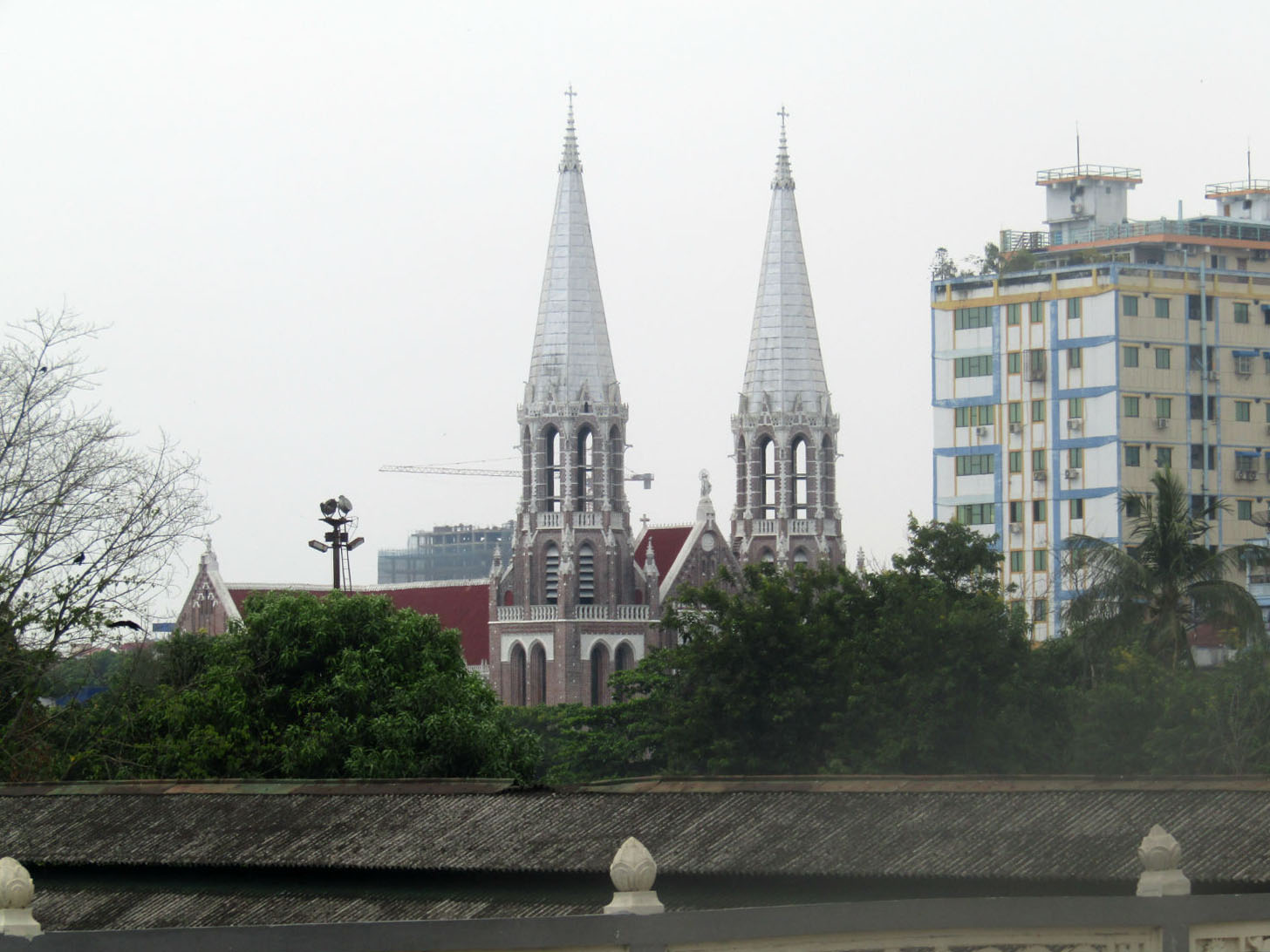
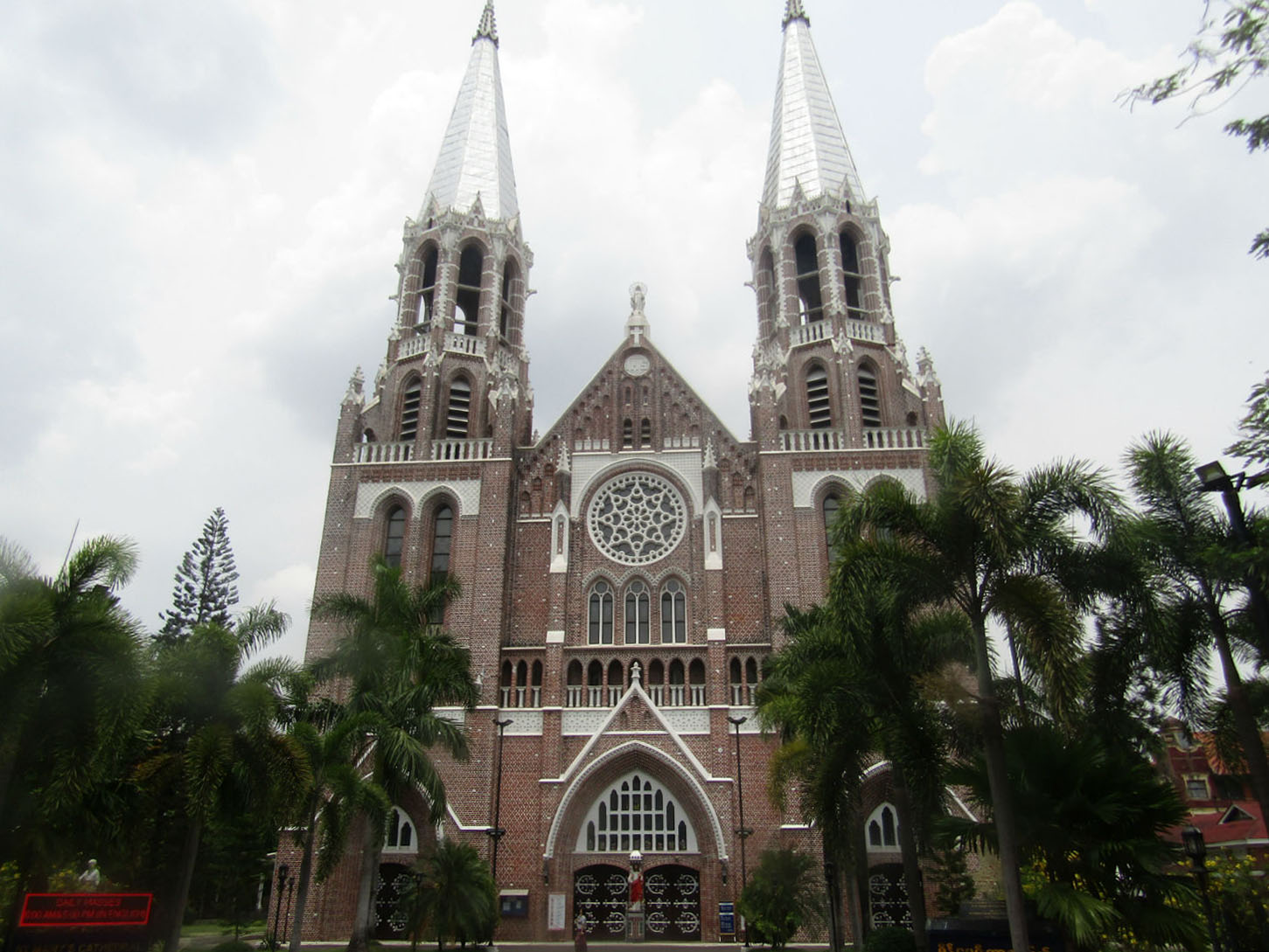
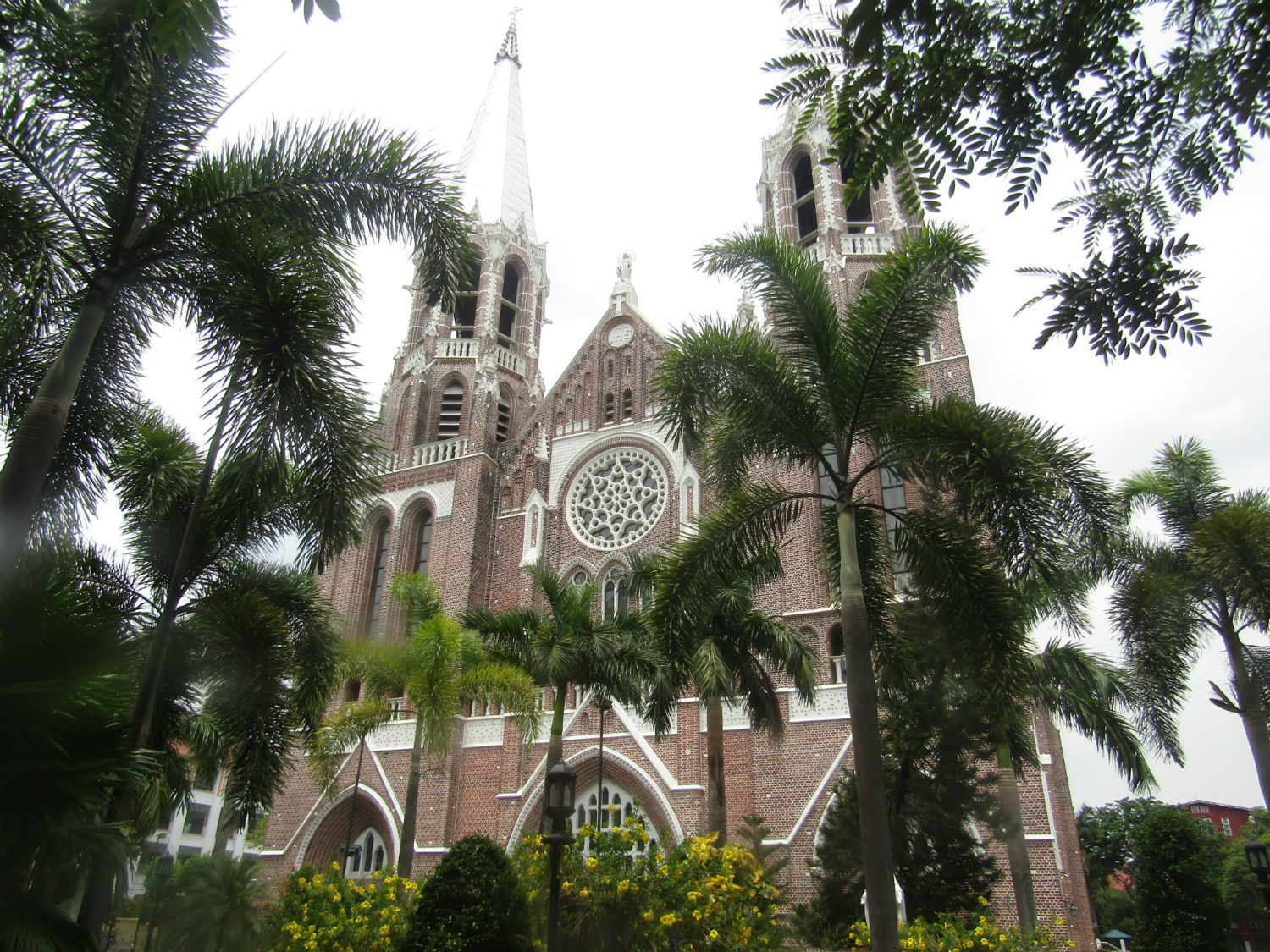
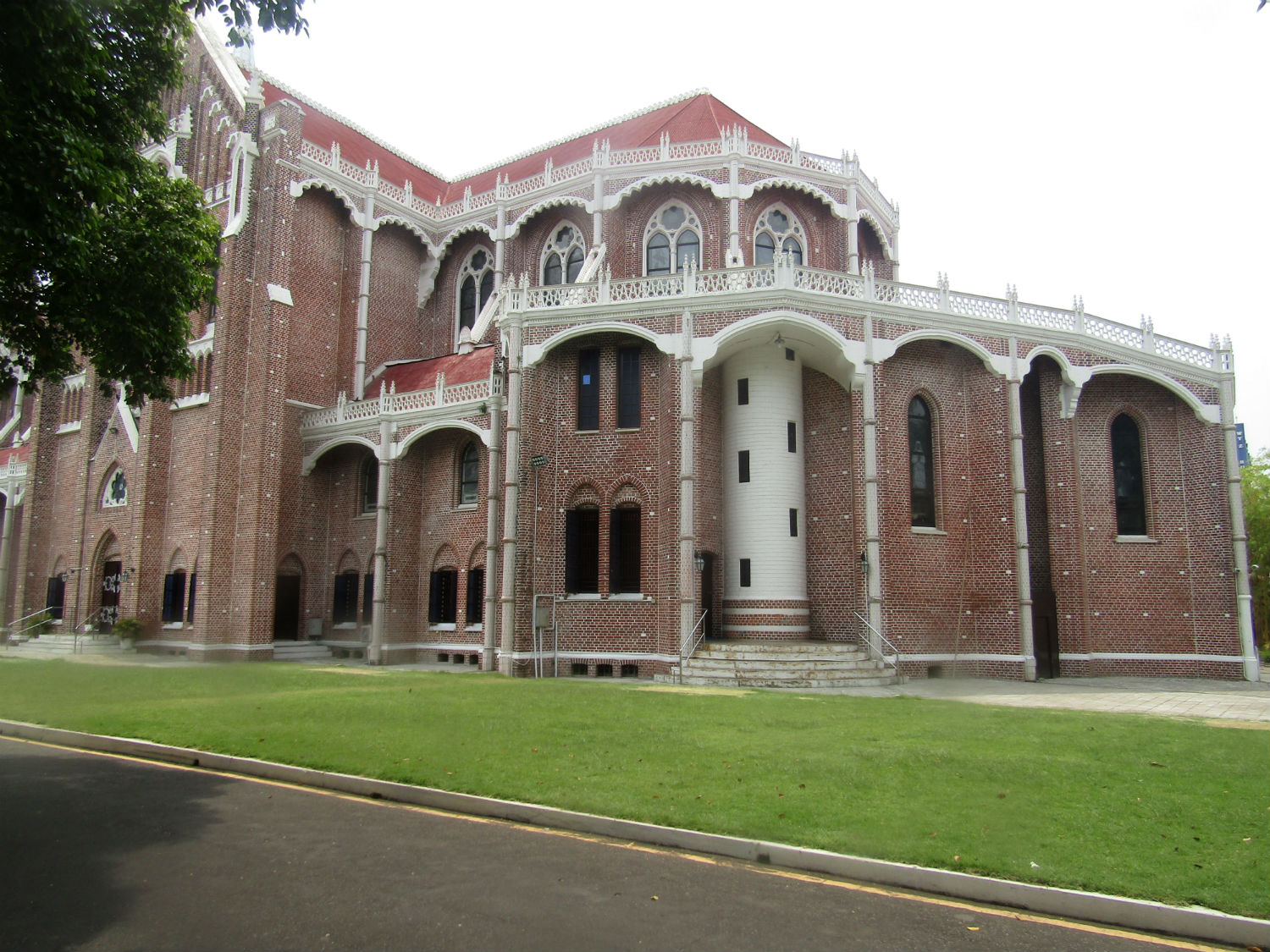
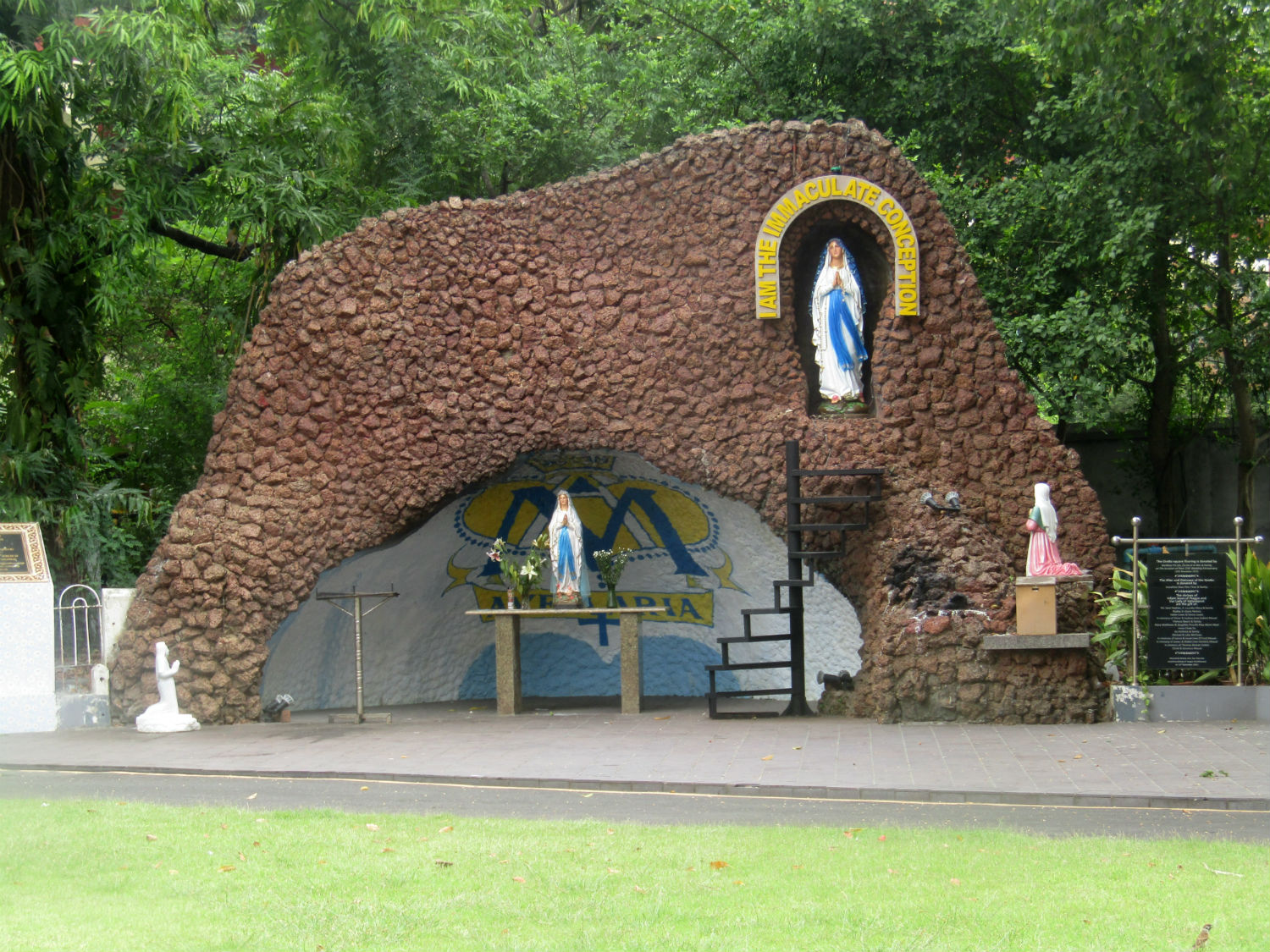
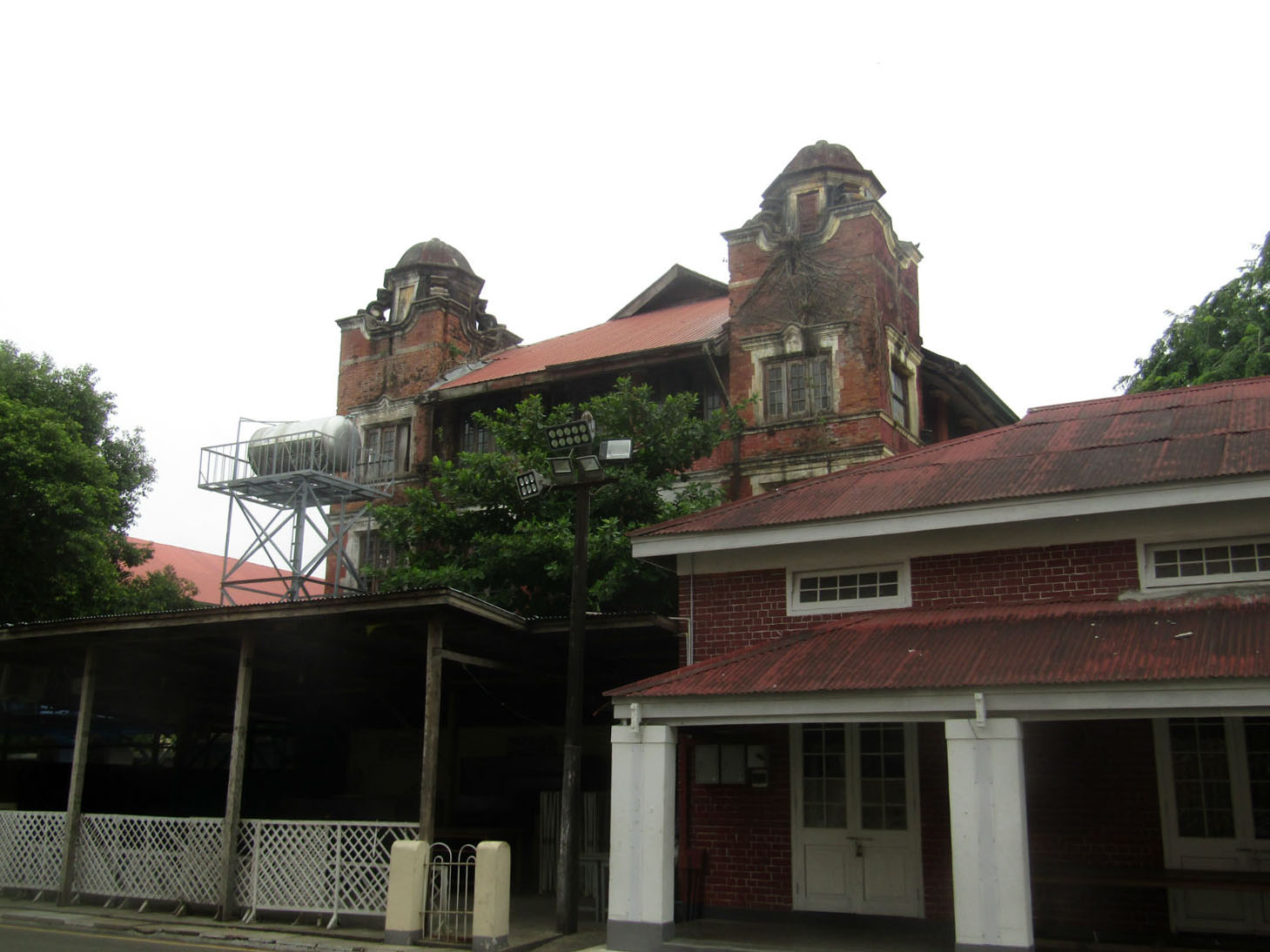 St Mary’s Catholic Church, Yangon
St Mary’s Catholic Church, Yangon
Bogyoke Aung San Market……..
A couple of hours sleep has worked wonders and with batteries topped up, I order an advance, taking a taxi downtown for another site visit; this time to the west of Sule Pagoda to the Bogyoke Aung San Market.
Bogyoke Aung San Market (formerly Scott's Market) is a major bazaar located in Pabedan township in central Yangon. Known for its colonial architecture and inner cobblestone streets, the market is a major tourist destination, dominated by antiques, Burmese handicraft and jewellery shops, art galleries, and clothing stores. The ground floor and the first floor are lined with small antique shops selling old coins, bank-notes, postage stamps and medals. In the middle of the market are jewellers, selling famous Burmese jade, Burmese rubies and other precious stones. The new wing of the market, across Bogyoke Aung San Market Road, houses shops that sell medicine, foodstuffs, garments and foreign goods.
Scott Market was built in 1926, late in the British rule of Burma, and although it is commonly believed to be named after James George Scott, the British civil servant who introduced football to Myanmar, it is actually named after the Municipal Commissioner of the time, Mr. Gavin Scott. After Burmese independence in 1948, it was renamed after Bogyoke (General) Aung San. A new wing of the market was added across Bogyoke Market Road in the 1990s. The market structure is listed on the Yangon City Heritage List.
The good hour spent around Bogyoke Aung San Market results in no purchases, tempting though some of the items are. especially the amber and jade and some of the exquisite wood carvings. I just have no need for them.
More of interest to me is the nearby Phaya Lan Railway Station where a train passes through running out of Central Station.
Bogyoke Aung San Market (formerly Scott's Market) is a major bazaar located in Pabedan township in central Yangon. Known for its colonial architecture and inner cobblestone streets, the market is a major tourist destination, dominated by antiques, Burmese handicraft and jewellery shops, art galleries, and clothing stores. The ground floor and the first floor are lined with small antique shops selling old coins, bank-notes, postage stamps and medals. In the middle of the market are jewellers, selling famous Burmese jade, Burmese rubies and other precious stones. The new wing of the market, across Bogyoke Aung San Market Road, houses shops that sell medicine, foodstuffs, garments and foreign goods.
Scott Market was built in 1926, late in the British rule of Burma, and although it is commonly believed to be named after James George Scott, the British civil servant who introduced football to Myanmar, it is actually named after the Municipal Commissioner of the time, Mr. Gavin Scott. After Burmese independence in 1948, it was renamed after Bogyoke (General) Aung San. A new wing of the market was added across Bogyoke Market Road in the 1990s. The market structure is listed on the Yangon City Heritage List.
The good hour spent around Bogyoke Aung San Market results in no purchases, tempting though some of the items are. especially the amber and jade and some of the exquisite wood carvings. I just have no need for them.
More of interest to me is the nearby Phaya Lan Railway Station where a train passes through running out of Central Station.

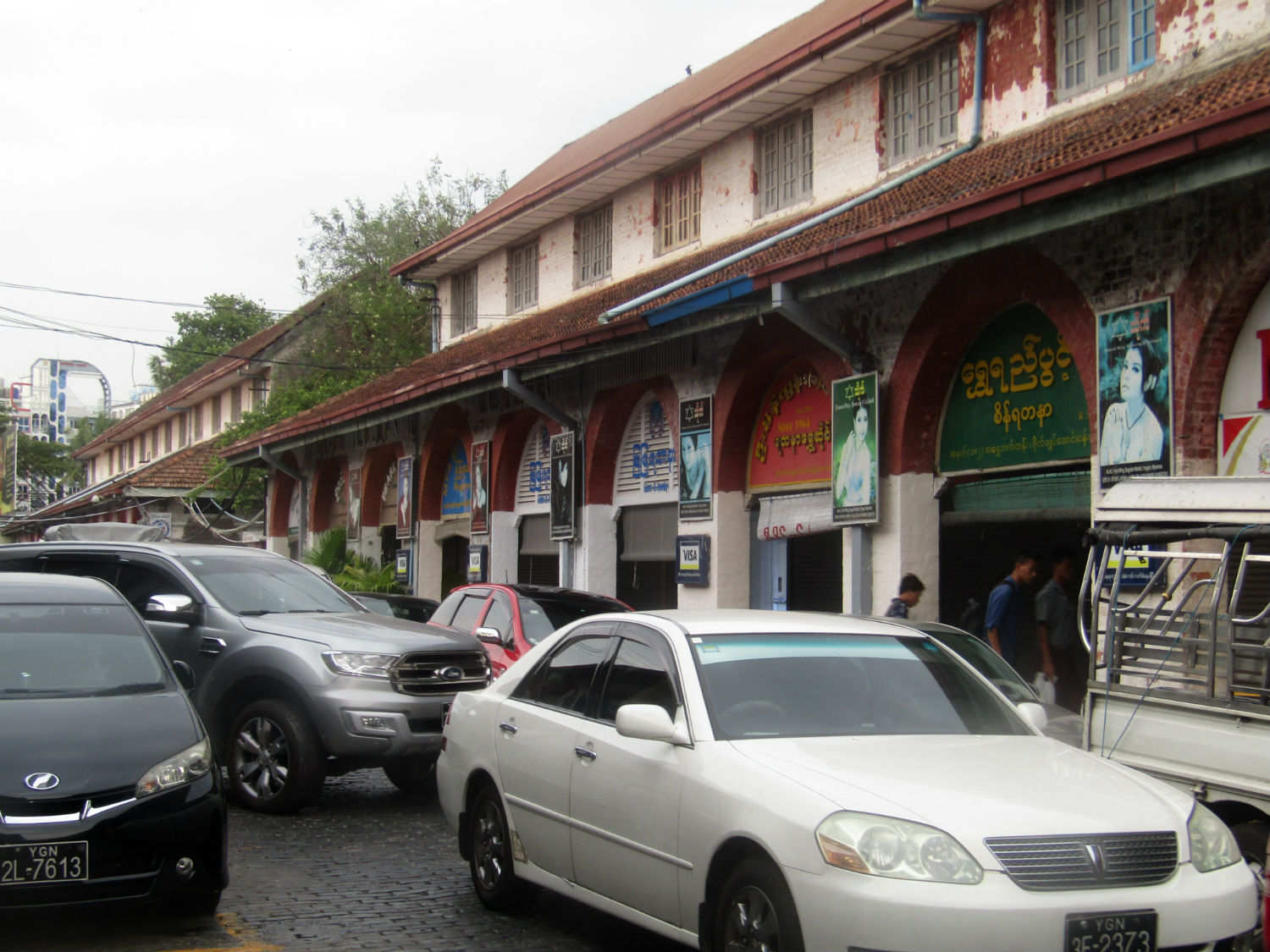
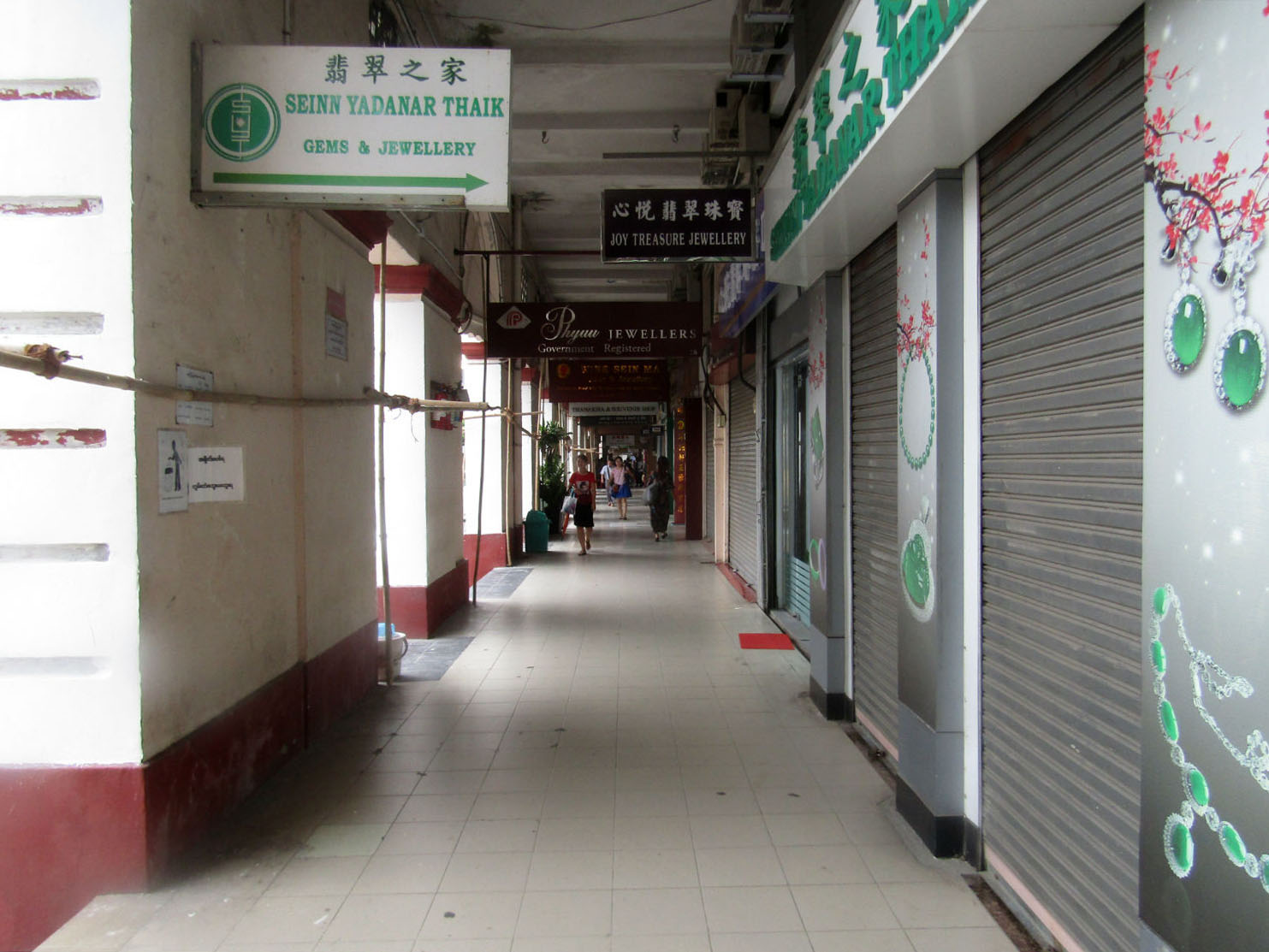 Phaya Lan Railway Station (left) and Bogyoke Aung San Market, Yangon
Phaya Lan Railway Station (left) and Bogyoke Aung San Market, Yangon
Junction City……..
Located across Bogyoke Road from the Bogyoke Aung San Market, Junction city is like an oasis in the desert, a shopping mall that rivals many in Thailand and certainly beats the one in my hometown. Here is a chance to do some shopping and then bliss: A wealth of international and local restaurants that cannot fail to satisfy Katoon’s needs appear. Ending up at Thai Kitchen she feels at home and I even order a beer. The bill is not cheap about the same as the equivalent in Thailand’s shopping centres but by now that hardly matters since there will be currency over now before we depart tomorrow. Just a few items find their way into the shopping basket then it’s back to the hotel by taxi. We arrive after dark and the day ends peacefully. Next Page.